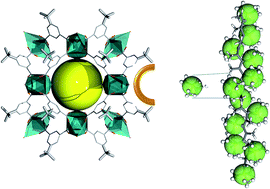Abstract
The effect of controlling interactions between the components in a mixed-matrix membrane at the molecular level has been explored. A systematic series of soluble metal–organic polyhedra (MOPs) of varying external organic chain length were prepared and applied within polymer membranes to produce anti-aging intercalated membranes (AIMs). Use of a soluble porous additive allowed for intimate mixing between the polymer and the porous additive, eliminating the formation of non-selective gas transport voids at the interface, typically found in traditional mixed-matrix membranes. Moreover, the molecular interaction thus created provided a valuable tool for tailoring the physical aging rates of the membranes. Aging was slowed by a factor of three with the optimal tBu-MOP additive, and viscosity measurements revealed they held the strongest MOP–polymer interaction, confirming the utility of the AIMs approach. MOP loading was therefore able to be optimized for the maximum anti-aging effect by monitoring the relative change in viscosity. Absolute gas permeability scaled with the MOP external organic chain length, revealing solubility-driven diffusion.


 Please wait while we load your content...
Please wait while we load your content...